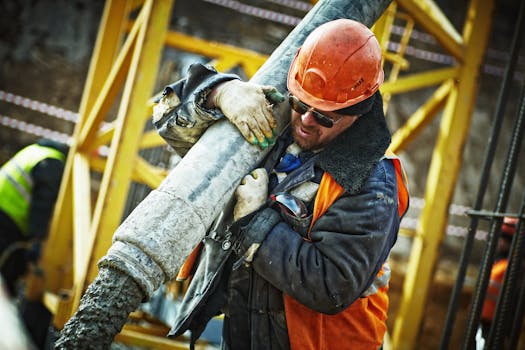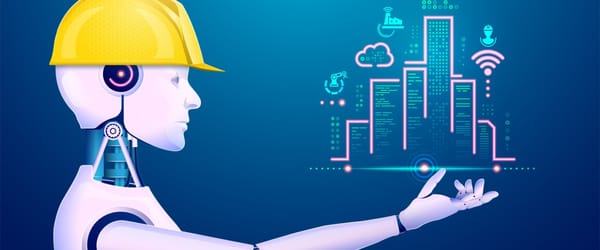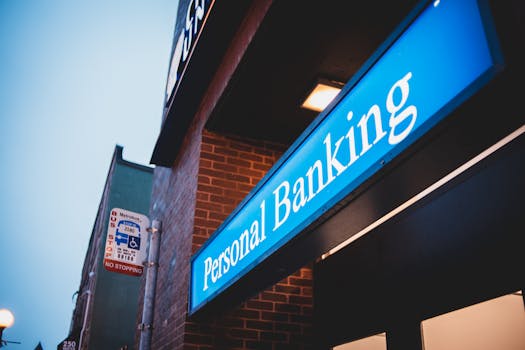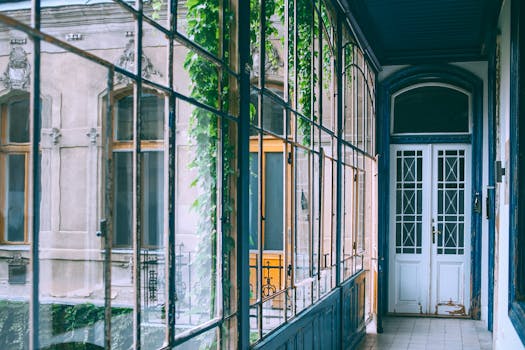Revolutionizing Construction Safety: How AI Predicts Hazards and Saves Lives on Project Sites

Building Tomorrow Safely: The Role of AI in Construction Safety
Building Tomorrow Safely: The Role of AI in Construction Safety
Artificial Intelligence (AI) is no longer just a buzzword; it's a reality that's transforming industries across the globe. One such industry where AI is making a significant impact is construction. Traditionally perceived as a sector slow to adopt innovation, the construction industry is now embracing AI to enhance safety measures on project sites.
AI in Construction: A Safety Revolution
Imagine a construction site where AI-powered drones fly overhead, scanning the area for potential hazards and providing real-time alerts to workers below. Visualize an environment where AI algorithms sift through mountains of data to predict safety incidents before they occur. This isn't some futuristic scenario; it's happening right now. AI is revolutionizing construction safety, and here's how.
Predictive Analysis: AI's Proactive Safety Measure
One of the most significant contributions of AI in construction safety is predictive analysis. By analyzing data from various sources, AI can predict potential safety risks and hazards. For instance, AI can identify patterns in previous accidents and near-misses, helping project managers to anticipate and prevent similar incidents in the future. This proactive approach to safety management can significantly reduce the occurrence of accidents on construction sites.
AI and Equipment Maintenance: A Safer, More Efficient Approach
AI is also being used to improve the safety and efficiency of construction equipment. By monitoring equipment performance and analyzing data, AI can predict when a machine is likely to fail or require maintenance. This not only prevents accidents caused by equipment malfunction but also saves valuable time and resources that would otherwise be spent on unexpected repairs.
Drones and Robotics: AI's Eyes and Hands on the Construction Site
Drones and robotics, powered by AI, are becoming increasingly common on construction sites. Drones can access hard-to-reach areas, providing detailed aerial views and identifying potential hazards. They can also monitor the site for compliance with safety regulations, ensuring that workers are wearing the correct safety equipment and following protocols.
Robots, on the other hand, can perform dangerous tasks that would otherwise put human lives at risk. From demolition to excavation, these AI-powered machines are taking over high-risk jobs, significantly reducing the risk of injury to human workers.
Wearable Tech and IoT: Monitoring Worker Safety in Real-Time
The Internet of Things (IoT) and wearable technology are also playing a key role in enhancing construction safety. Workers can wear smart helmets and vests equipped with sensors that monitor vital signs and detect falls or impacts. If a worker's vital signs show signs of distress or a fall is detected, the system immediately alerts the site supervisor, potentially saving lives.
Training and Simulation: Preparing Workers for Real-World Hazards
AI is also being used to create realistic training simulations for construction workers. By recreating real-world scenarios, these simulations provide workers with a safe environment to learn and practice their skills. This hands-on approach to training can significantly improve a worker's ability to respond to hazards, reducing the likelihood of accidents on site.
AI: A Life-Saver in Construction
In conclusion, AI is not just a tool for improving efficiency and productivity in the construction industry; it's a life-saver. By predicting potential hazards, maintaining equipment, improving training, and monitoring worker safety in real-time, AI is making construction sites safer places to work. As AI technology continues to evolve, we can expect even greater improvements in construction safety in the future.
So, the next time you pass by a construction site, take a moment to appreciate the invisible hand of AI working tirelessly to keep those hard-hatted workers safe. Because in the world of construction, AI isn't just building structures; it's building a safer tomorrow.



